The Scientific Detectives Probing the Secrets of Ancient Oracles
Geological features, toxic fumes, and visions of the future.
One hot spring day, two scientists began climbing a steep, boulder-strewn ridge near Selcuk, in southwestern Turkey. The few stunted pines sprinkled here and there offered little shade. “Don’t touch the rocks with your hands too much,” warned their guide. “Scorpions.” Several hundred feet up, a dark, narrow opening pierced the slope. They climbed in and descended about 20 feet to the floor of a small, cool cavern. In the indirect sunlight, they could see stalactites lacing the walls, and curving passages, too small to enter, spiraling down. A newly shed snakeskin lay on the floor. At the rear, five natural steps led up to a rock formation resembling a tangle of human bones. They had found their quarry—an oracle of Cybele, earth goddess of Asia Minor, curer of disease, granter of fertility, seer of all things. From prehistoric times until 2,000 years ago, and perhaps longer, people came to this cave to ask Cybele the same questions we ask today. Whom should I marry? How can I make more money? How long will I live? Today, we have therapists and algorithms, risk analysts and actuarial charts. The ancients had oracles.
The scientists were John Hale, an archaeologist from the University of Louisville, and Jelle Zeilinga de Boer, a geologist from Wesleyan University. They had formed themselves into a sort of oracle detective team, seeking out the sites of these ancient prognosticators and attempting to figure out why they are located where they are and what role they played in the ancient world.

Around 50 B.C. the Roman politician Cicero wrote, “As far as I know, there is no nation whatever, how polished and learned, or however barbarous and uncivilized, which does not believe it is possible that future events maybe be indicated, and understood.” Oracles were the most famous and enduring institutions of the ancient world. The best known was Greece’s Oracle of Delphi, where, for at least 1,000 years, kings and common pilgrims visited a cave where a priestess leaned over a sacred spring and inhaled from it the breath of the god. Elsewhere, the future was divined via haruspicy, the reading of organs from sacrificed animals; empyromancy, the interpretation of flickering flames; or augury, which involved observing lightning flashes and other phenomena. At Dodona, priests of Zeus were said to hear the future in the rustling leaves of a sacred oak. At Sura, on the Turkish coast, it was in the patterns of fish congregating around a magical whirlpool. On earthquake-prone Mount Garganus in Italy, the method was incubation: A supplicant performed purification rituals, slaughtered a black ram, and slept on its skin in the sanctuary. That night’s dream held portents, interpreted by a resident priest. At the Cybele shrine visited by Hale and de Boer, divination apparently involved dice made from the knucklebones of sheep. Thousands have been found at its entrance, along with votive statues, coins, and other offerings.
Almost all these sites had one thing in common. They all were located upon or within extraordinary natural features—deep caverns, strange rock formations, bubbling springs, ancient groves—that apparently had something to do with their powers. Some researchers believe cults connected to some of these sites could go back to well before the rise of civilization, as far as 25,000 years. As religions and belief systems changed, some sacred sites went with them—Cybele shrines were renamed for more familiar Greek gods—at least until Christianity came to dominate the Mediterranean. That was when the Roman Emperor Theodosius declared Christianity the state religion, and outlawed oracles, in A.D. 385. Sites great and small were pillaged, repurposed, or just buried and forgotten. (One exception is the cave on Mount Garganus, now a sanctuary of the Archangel Michael of Mont Sant’ Angelo.) Sixteen centuries later, archaeologists started digging.
In the 1990s, looters rediscovered the cave of Cybele before archaeologists got there. Years later, Hale and de Boer were led there by the director of the Ephesus Museum in nearby Selcuk, Cengiz Icten. Outside the cave, Icten poked the dry ground with a walking stick and grinned. Suddenly, we saw what he was seeing. Everywhere in the loose soil were pottery sherds, shaped stones, even a corroded bronze coin, “It took many centuries for all this to build up,” he said. “This place goes back a long way.”
Suddenly, a huge, dark shape exploded from the mouth of the cave, almost knocking us all down, and flew into the sky. It was a large owl. As it flapped off, we could hear its babies cooing from some hidden crevice within. “This place does not feel spooky to me,” said Hale. “This seems like a growing place. It feels like a revelatory place.”
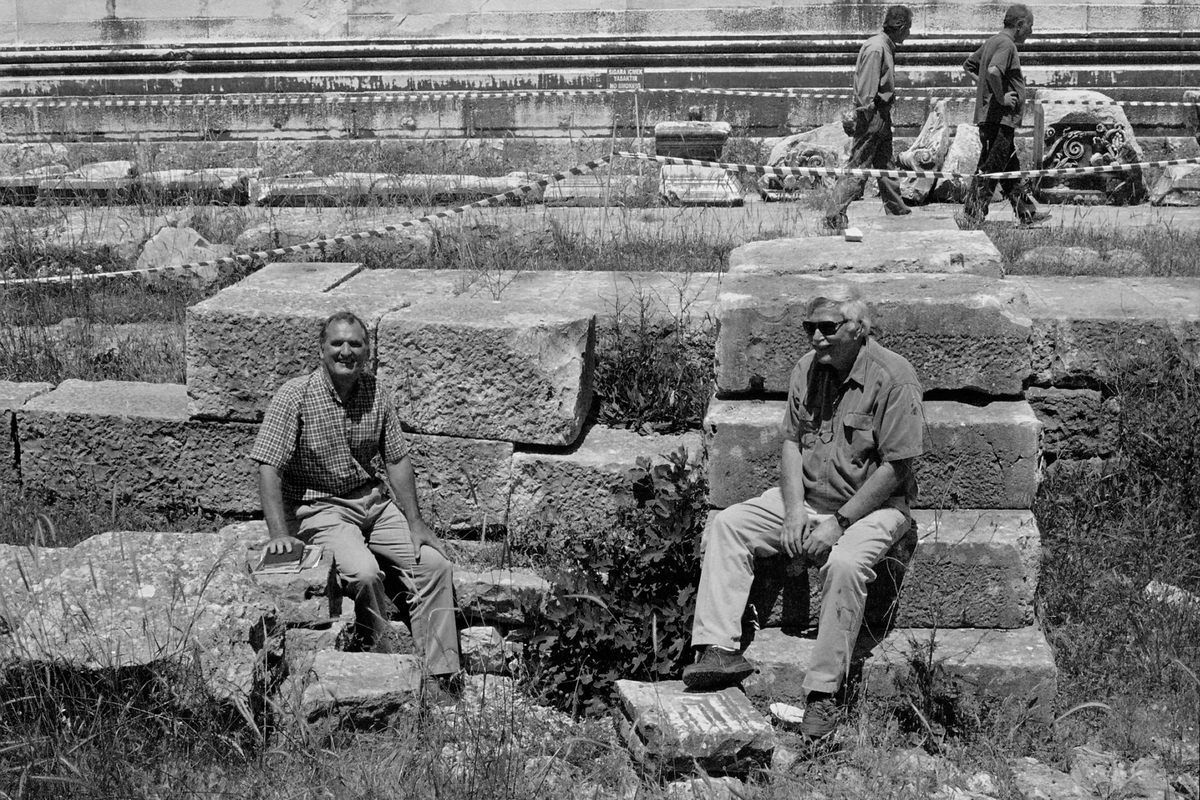
Hale and de Boer got their start in the oracle business at the famed Delphi itself. The archaeologist and geologist had met in 1995, while both were touring ancient ruins elsewhere. They became friends over a bottle of wine and their shared interest in the oracle—a space where their spheres of academic interest overlapped. That night they vowed to solve the mystery.
Hale brought a deep knowledge of ancient history, languages, mythology, and architecture. De Boer supplied expertise in the even more ancient: the origins of rocks, the mechanisms of earthquakes, the workings of volcanoes. He had surveyed the area around Delphi in 1981 for a study of Greek earthquake hazards. “Geology is at the ground level of everything, whether it’s biological, archaeological, anthropological or ecological,” he said.
“It’s my hope,” Hale said, “that by learning about the past, one might find some inspiration about how to live today.”
Delphi sits on the slopes of Mount Parnassus, about 75 miles west of Athens. It is thought to have originated as a sanctuary of Gaia, the pre-Greek earth goddess. The Greeks later said it was where Zeus had placed the center of the world. It was also the main abode of Apollo, god of the sun and of prophecy, near where he slew the giant serpent Python. By the fifth century B.C., it hosted an elaborate complex of ritual buildings. Over the colonnade of Apollo’s temple was carved “γνῶθι σεαυτόν.” “Know Thyself.”
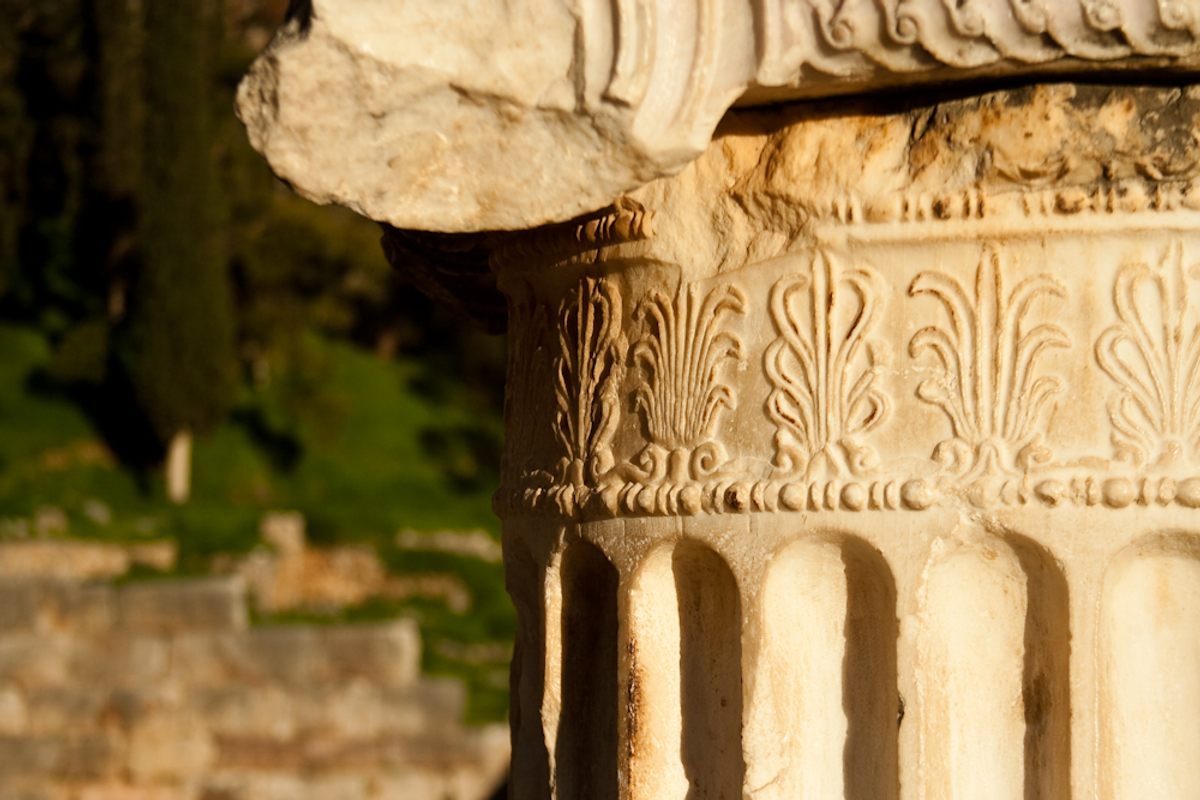
According to Greek writer Plutarch (A.D. 46–120), inside the temple a small, dimly lit underground sanctum enclosed a cleft in the bedrock. The feature exuded a sweet-smelling vapor—the pneuma, or “breath of the god.” The pneuma, he wrote, was produced by “natural underground forces,” and was emitted “as if from a spring.” Once a month, a priestess, or Pythia, went through elaborate purification rituals, sat in a special chair, and hung her head over the chasm to inhale the pneuma. Then she began speaking in a strange, disembodied voice. Questioners were admitted.
The Pythia’s answers could be cryptic or unwelcome, but they were always taken seriously. Matters of business, marriage, treaties, and wars were undertaken on her counsel. In legend, it was the Pythia who told Oedipus he would kill his father and marry his mother. Some time before 399 B.C., one Chaerephon asked the Pythia if anyone was wiser than his friend Socrates. “No,” said the oracle—either confirming either the philosopher’s greatness or denying the very existence of human wisdom. According to fourth-century B.C. historian Herodotus, in 546 B.C., the Lydian king Croesus sacrificed 3,000 animals, burned piles of valuables, and sent a huge treasure to honor the oracle. Then he sent a messenger to ask whether he should attack his rival, Cyrus of Persia. The priestess replied that if he did, he would “destroy a mighty empire.” Croesus attacked and was defeated. By some accounts, he was given a last-minute reprieve from being burned alive, and sent a messenger to the oracle to ask why it had betrayed him. The Pythia replied: “Croesus ought, if he had been wise, to have sent again and inquired which empire was meant, that of Cyrus or his own; but if he neither understood what was said, nor took the trouble to seek for enlightenment, he has only himself to blame for the result.” Her message was simple. Know thyself.
What kept people coming back to oracles—outside, of course, of the universal desire for certainty about the future? Perhaps the seers did, indeed, have a good track record in predicting the future. One reason for this could be that oracles were the greatest intelligence-gathering and -disseminating agencies of their day. According to a 1956 history of oracles by historian H.W. Parke, temple officials often subjected powerful people to days or even weeks of questioning before allowing them to consult the oracle. This meant that those officials had deep access to political developments, military strategies, and economic trends—sometimes from opposite sides of a conflict. This may have helped them make informed judgments that they could pass on to the priest or priestess. Another factor is that oracles often favored the most generous tippers—who were, thanks to their wealth, probably more likely to prevail in an economic or military conflict anyway. Croesus notwithstanding.

Then, there is the third theory: the uncanny. “There is a hell of lot more around us than we know about,” said de Boer, a die-hard scientific empiricist with little patience for speculation. “When people ask me, ‘Do you know how it all worked?’ I have to say no. There are some things we will never know.”
It should be noted, though, that something can seem extra-natural without being outright supernatural. The investigation of many such phenomena is often known as geomythology, or the study of how natural processes—from earthquakes and volcanic eruptions to floods and eclipses—get encoded in religious stories, mythology, and folklore. In the case of Delphi, it had been speculated that the pneuma was some gas or vapor, emitted from a natural chasm or spring, with psychoactive effects.
In the late 19th and early 20th centuries, Delphi was rediscovered by archaeologists. At the time, scholars denounced the whole idea of the pneuma, supernatural or geological, as a myth or even a hoax. Excavation of the ruins revealed no obvious cleft or cave where the oracular sanctum might have been. There was also no obvious sign of volcanism that would account for the release of gases. According to Parke, some researchers believed that the priestess was inspired by sitting over a hole filled with burning marijuana. Another, more recent, theory has it that the Pythia was high from chewing the toxic leaves of the oleander tree, or inhaling their smoke.
De Boer, however, had examined the area closely in his initial survey, with a geologist’s eye. To the east of Delphi, he spotted an earthquake fault exposed by a modern road cut, and followed it on foot to near the temple complex. “It was beautifully expressed on the surface,” he said. To the west lay a known fault, striking in the same direction. And if you connected the ends, the thread clearly ran under the temple, though that part was obscured by rocky debris and the buildings themselves. De Boer had read Plutarch, and connected that cleft with what he saw in the ground. It was not a geological smoking gun, exactly, but it was a geomythological lead. “Present-day humans are pretty arrogant when they think the ancients could not have observed things clearly,” he said.
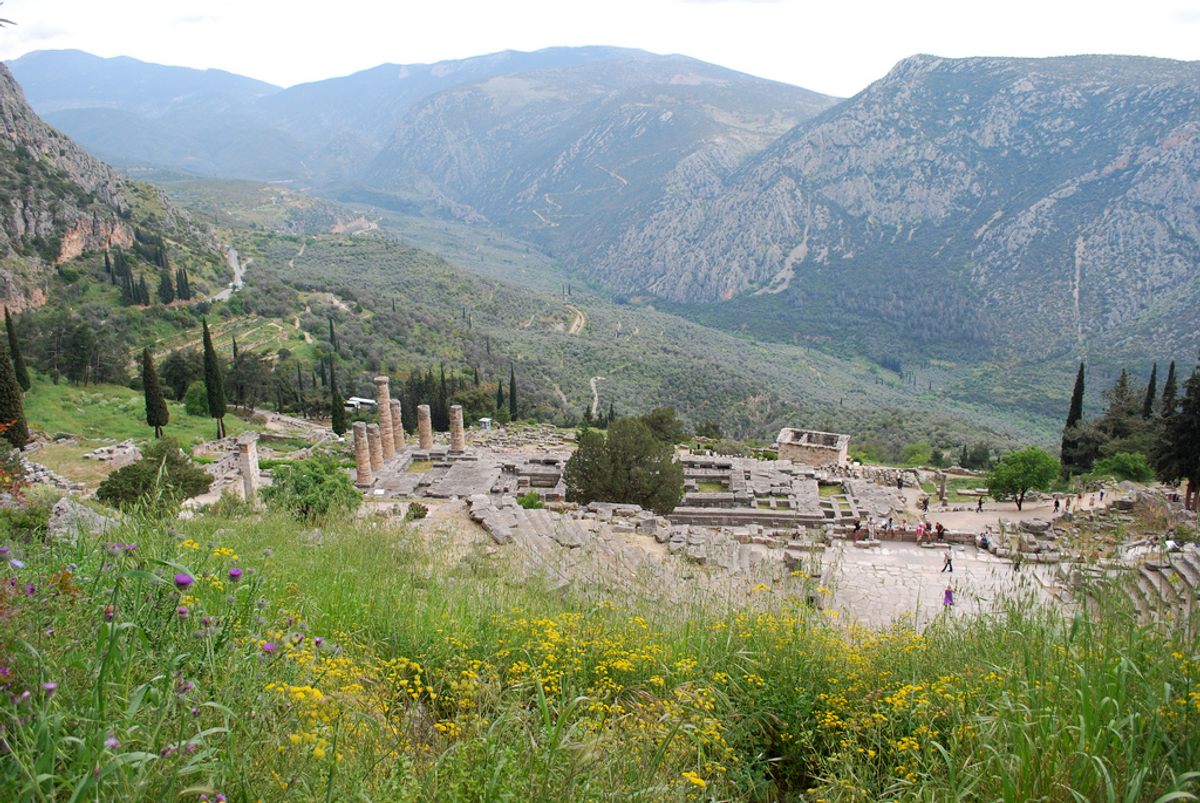
Later, in the late 1990s, de Boer and Hale visited Delphi together and, among other things, dug up Greek government geological maps showing that the limestone in the area was laced with tarry petrochemicals. There was no evidence of geothermal features, but a slow slippage of the fault could create enough heat to vaporize those deposits. They also found traces of a second fault, almost perpendicular to the first, also below the temple floor. This intersection would have created an ideal vent for underground gases. There was no spring, as Plutarch suggested, but Hale and de Boer found evidence of a drain, and, uphill, some still-running spring water. They sampled this water and chiseled out pieces of travertine, a chalky rock that forms when chemical-laden spring waters react with air. In both they found traces of hydrocarbon gases.
One of the gases in the flowing water is ethylene, a substance used in the early 20th century as an anesthetic, and still widely used in the chemical industry. In small doses, it is said to induce an out-of-body euphoria and a release of inhibition. In the interest of science, of course, Hale and a couple of friends in Louisville got hold of a tank of ethylene, opened the valve in a backyard garden shed about the size of the alleged inner sanctum, and took turns, well, huffing it. Hale is pretty sure this was legal. They lost the feeling in their hands and feet, and began seeing the world as if from outside. “Very strange, but not scary,” said Hale. The next logical step? Predicting the outcome of the next Kentucky Derby.
Starting in 2001, the team published a series of scientific papers laying out the case that the Delphic Oracle operated exactly as described, and that much of it could be explained scientifically. Though not everyone bought into all their conclusions, many scholars were converted. Modest fame followed, and a book. There was just one problem. Every garden-shed prediction about the Kentucky Derby was dead wrong.
Hale likes pointing out that the Greek words for “prophet” and “madness”—mantos and mania—come from a common root. “When Plato considered the Delphic Oracle, he said that the priestess was never of any use when she was in her right mind. But when she was mad, she benefited all mankind,” said Hale. “That is a beautiful thought. It tells us that there are special places on Earth that shape human belief.”
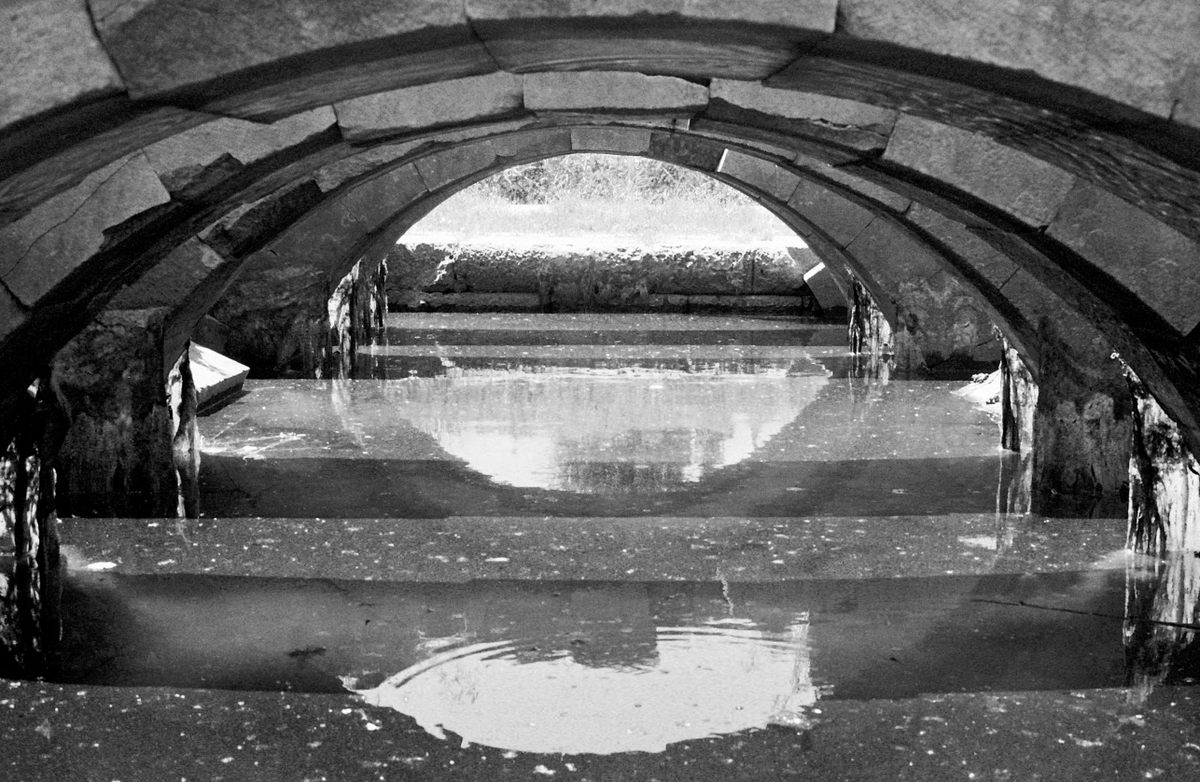
Emboldened by their work at Delphi, Hale and de Boer looked farther afield. Southwest Turkey was a logical starting point. In the centuries before Christ, the Greeks had colonized the region. At other times there were Hittites, Lydians, Persians, and Romans. There are multicultural ruins all over the place, including the oracular Greek temples of Klaros and Didyma, nearly as important as Delphi in their time, if not quite as well known. According to inscriptions dating back as far as 600 B.C., rulers from as far away as present-day Russia and Mauritania consulted these oracles about plagues, labor disputes, and religious crises. Locals asked about planting crops, money matters, or, in one case, whether to embark on piracy. (Didyma approved.) So one spring they set out to explore as many of them as they could, gather samples, and devise, if possible, a unifying theory of ancient oracles.
To reach Klaros, we drove through wooded hills and farmland near the Aegean coast to a small valley, where we followed a dirt road through the lemon groves. The road entered a swampy area and dead-ended against a rocky wall. From out of high reeds rose a set of broad steps leading to a great stone platform. Only a few columns and walls still stood, but in the remains of the sanctuary were fragments of a sculpture of Apollo said to have once been over 20 feet high. Countless names and inscriptions had been carved into the ruins—possibly the greatest surviving collection of ancient Greek inscriptions in a single place. Artifacts found around the temple foundations date at least as far back as 1200 B.C. “People obviously sensed early on that there was something special about this place,” said Hale.
The stone slabs that once formed the main temple floor had been hauled away. This had exposed a basement labyrinth once hidden within the platform—and, Hale and de Boer suspected, Klaros’s oracular secrets. The labyrinth, excavated by French archaeologists in the 1980s, led from the front steps to two chambers in the rear, all now filled waist-deep with stagnant water.
According to an A.D. 18 description by Roman aristocrat Tacitus, prophecies here were offered only on certain nights: “A priest, after hearing merely the number and names of the clients, [went] down into a cave; there he [drank] from a secret fountain.” The priest went into a trance, and then cried out his prophecies from an unseen corner. About 50 years after Tacitus, Pliny the Elder noted that these priests served only one-year terms—possibly, he noted, because the fountain “inspires wonderful oracles, but shortens the life of the drinker.”
For decades prior to the site’s excavation, researchers had looked for such a cave in nearby hillsides. The discovery of the labyrinth and these chambers suggested that the oracular cave was, in fact, embodied by the temple itself. It even looked like the structure had been repeatedly expanded and elaborated around it, much like at Delphi.
“Let’s try and get a feel for the oracular experience,” said Hale. In bathing suits and water shoes—we knew ahead what to expect—we descended four steps into the watery labyrinth entrance. The water was warm, opaque with algal scum, and alive with frogs and turtles. I tried not to think too hard about what else might be down there, rubbing against our legs. We waded through six turns to reach the chambers. At least we had the open sky above us. The experience would have been a lot spookier for ancient pilgrims following the priest. It would probably have been pitch black, the tunnel barely shoulder-wide with the ceiling at head-height. At the end of the labyrinth, we came to a room covered with surviving stone arches, and with stone benches along the walls. Here questioners must have waited to hear prophecies.

Beyond this room was a rectangular inner chamber where archaeologists had found a circular hole in the floor, containing water—the secret fountain, apparently. Perhaps the water source had shifted and begun to overflow, or maybe rain had filled the old basement. In any case, we could not see the hole and had to feel for it with our feet—carefully. A caretaker had warned us it went down at least 20 feet. Off to one side, we finally felt it. It was covered by what felt like a modern metal grate.
Hale and de Boer suspected this spring was effervescing hydrocarbon gases like those at Delphi—maybe even a lot more potent, if the priests were dying prematurely. “In a closed space, it would be like sniffing gasoline, only worse,” suggested de Boer. “Of course, not very healthy.”
By feel, we fed a long, plastic hose down through the grate. A big plastic syringe was attached to the other end, and we sucked up water samples from the depths. These samples would go back to de Boer’s lab. Our next target would be Didyma.

Pilgrims originally reached Didyma by walking 10 miles from the coastal city of Miletus along the Sacred Way, a stone path flanked by sphinxes, fountains, and tombs. Remnants of it can still be seen from a parallel, far less impressive asphalt road. The temple lies on the outskirts of the small village of Didim, where a century of excavations has revealed a stupendous building with a multistory central court, much bigger than Klaros—much bigger than the Parthenon, actually, which would fit comfortably inside it. Like Delphi, Didyma is said to have featured a spring above which a priestess sat. The spring is thought to have dried up after Persian invaders burned and looted the place in 493 B.C. It miraculously returned, supposedly, after Alexander the Great passed through some 150 years later. Today its exact location has been lost.
When we arrived the place was crawling with tourists. This didn’t bother Hale or de Boer. They were looking for something very specific: the site of a now-vanished little house in the center, where a priestess “receive[d] the god by imbibing the vapor of the water,” according to the fourth-century A.D. writer Iamblichus. In the courtyard, we spotted three round, well-like structures, all currently dry. Any of them could have been the spring. De Boer speculated that they all could have been the spring; maybe it had dried up and popped up elsewhere periodically, he said, due to natural shifts in underground waterways. “They must have moved the well from time to time to keep up,” he said.
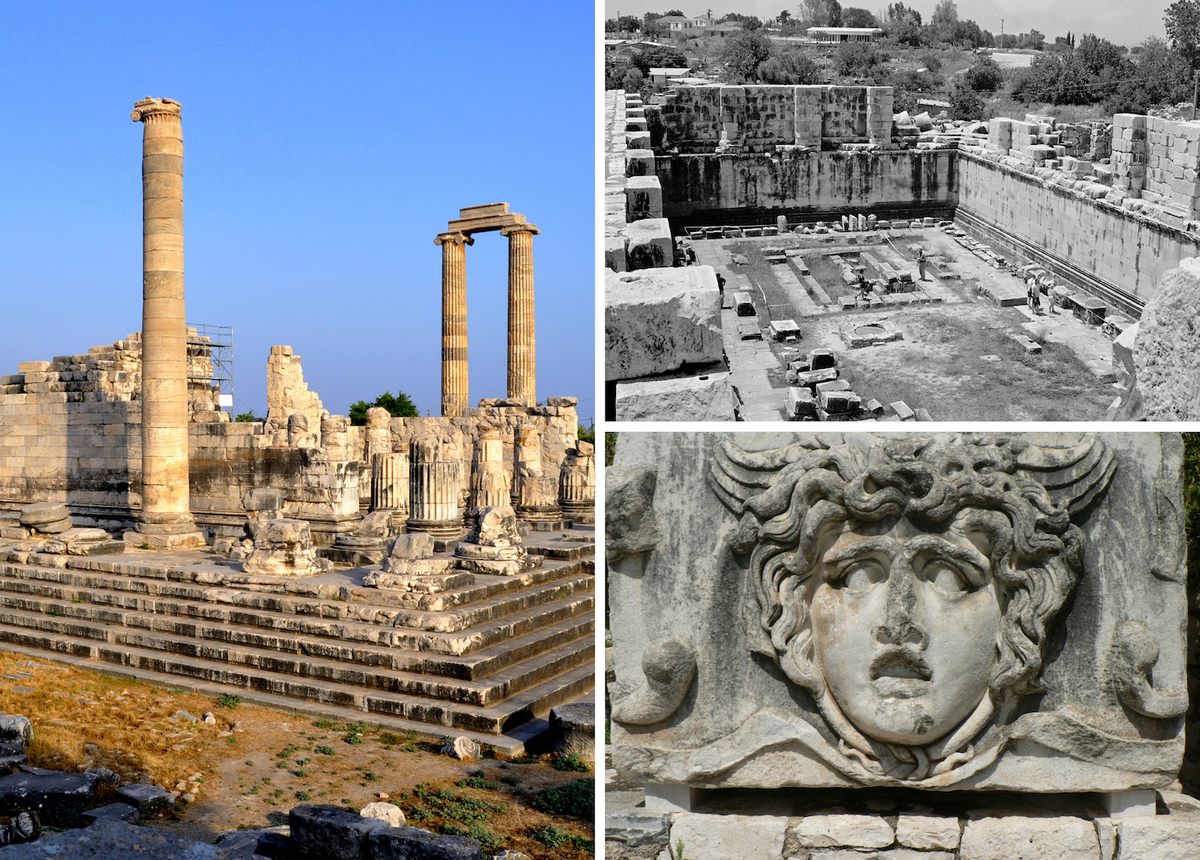
In the absence of any water within the temple itself, de Boer went to a well in front, where pilgrims are thought to have purified themselves before entering. It held plenty of water, as well as coins that people had tossed much more recently. We poked the hose down and sucked up some water. “Second or third best, but better than nothing,” said de Boer.
Some months later, de Boer called me with the results: The water at both Klaros and Didyma contains ethylene, along with other hydrocarbon gases including methane and ethane. Ever the cautious scientist, he said he needed to go back for more investigation.* But, he said, “This gives us a good indication that a similar process was going on at all these places.”
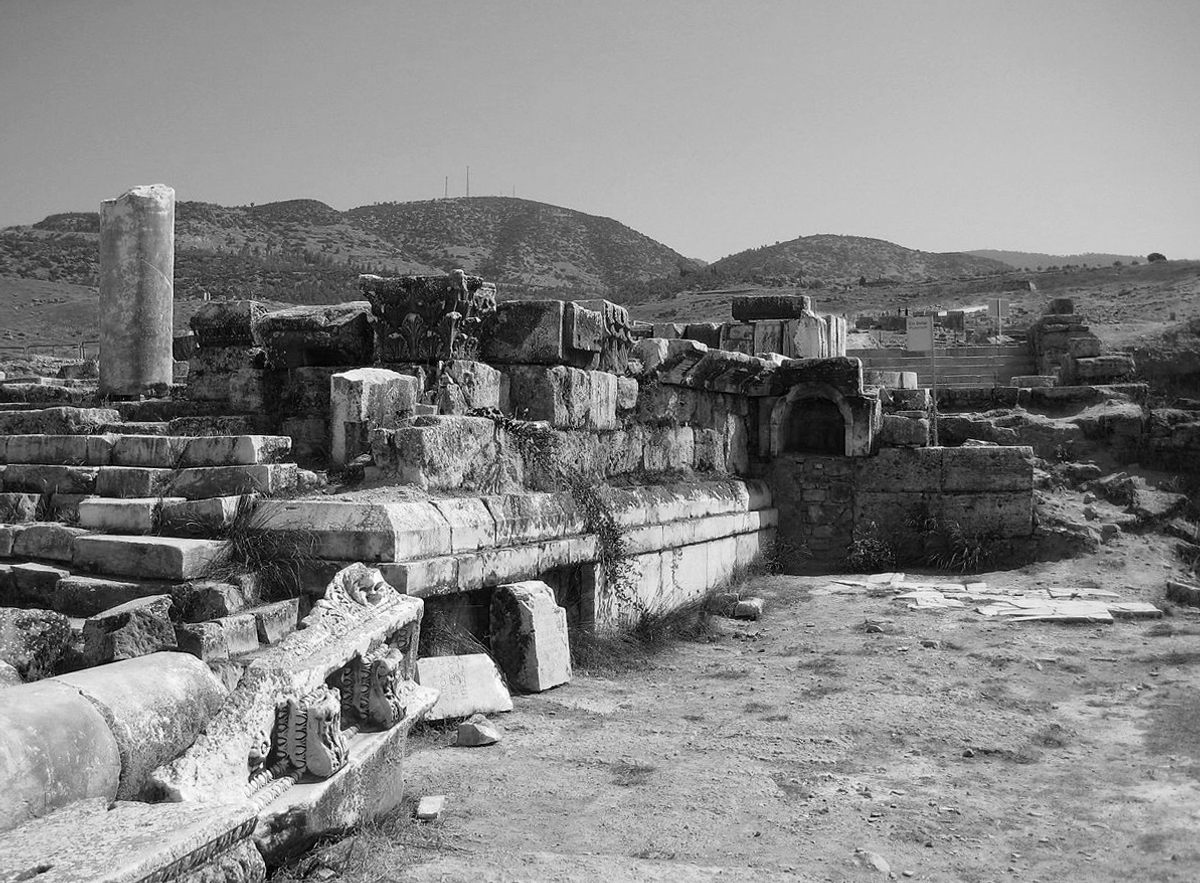
We tried to investigate other oracular haunts over the next few days, but time had shifted the landscape and muddled evidence at many. Patara, once a seaside city said to host an oracle of Apollo, was sunken into silt and underbrush, leaving little to see. At Sura, ancient people had once bought kebabs that they tossed into a strange whirlpool—possibly a freshwater spring blending with the sea below the tide line—and priests told the future by observing the fish that gathered for the feast. We found the ruins of the temple there and a nearby spring, but the shoreline had long since receded, and the site itself was mired in a swamp. We hunted for Acharaca, a long-lost cave dedicated to the god of the underworld Pluto and his queen Persephone. There, sacrificial bulls led in were said to simply drop dead. Near the rumored site, we sniffed hydrogen sulfide—a sign that perhaps the bulls were victims of volcanic gases. Locals told stories of collapsed underground vaults, and warned of venomous snakes. Hale and de Boer, patient but weary, resolved to return some other time.
We also ventured to the ancient town of Hierapolis, whose ruins sprawl out over a mountain slope. Pure white terraces, formed of travertine-type minerals precipitating from dozens of chemical-laden springs, mantle the mountainside. The waters, used as a spa in ancient times and still available for wading or swimming, are said to treat high blood pressure, skin disease, rheumatism, and eye problems.
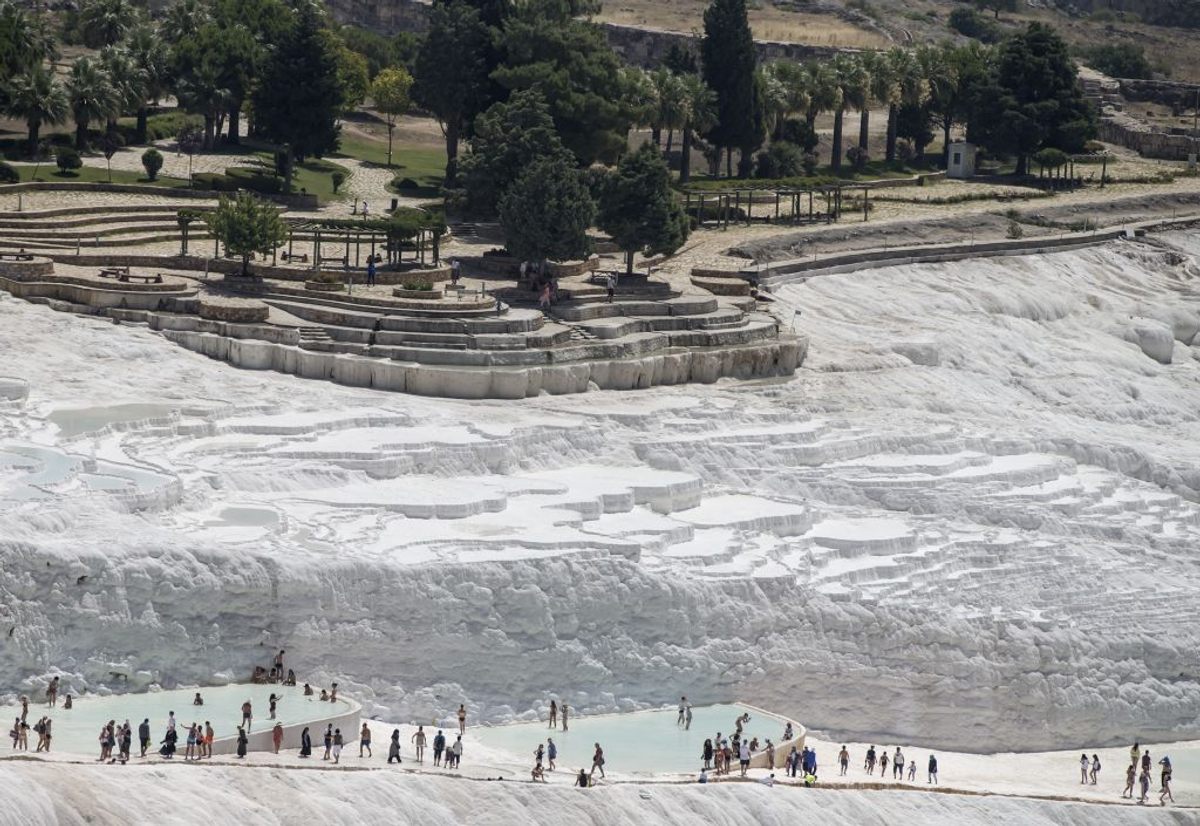
In the ruins above the spa was the place de Boer and Hale had come to see: a small oracle called the Plutonium. “It was supposedly an entrance to hell,” said Hale. Ancient authors write of a dense, deadly vapor issuing from it. Sacrificial animals such as sparrows were thrown in and quickly died. “Mysteriously taken by the god,” said Hale. The apparent portal is a tiny arched doorway cut into a cliff next to the ruins of a modest Apollonian temple. Except for a head-size gap, the door was closed off with a recent-looking block-and-mortar job. On a nearby wall was a partly obliterated Greek inscription. Hale struggled to make it out: “dreams … earth … oracle …”
As we approached, we were struck with a terrible stench. It was hard to say if this came from the cave or two small dead porcupines on the marble pavement nearby. An elderly lady was sweeping up a pile of dead birds with a broom, like it was her regular job.
De Boer said that in the 1980s Turkish scientists had shown the vapor to be largely carbon dioxide, which can come from volcanic sources. Heavier than air, it can kill by displacing oxygen wherever it pools. They also identified whiffs of sulfuric acid and a few other asphyxiants and poisons. Ancient accounts said that while the sacrificial animals died in the Plutonium, the priests could go in and out unscathed. “I believe they had bladders of air under their robes,” said de Boer. “It must have made people really afraid.” Since our trip, German scientists have shown that carbon dioxide around the Plutonium tends to pool up in the cool of the night, creating a lethal layer a couple of feet thick. The concentration of the gas falls rapidly with height—so it could quickly suffocate animals close to the ground, while humans could wade through, safe and unperturbed.
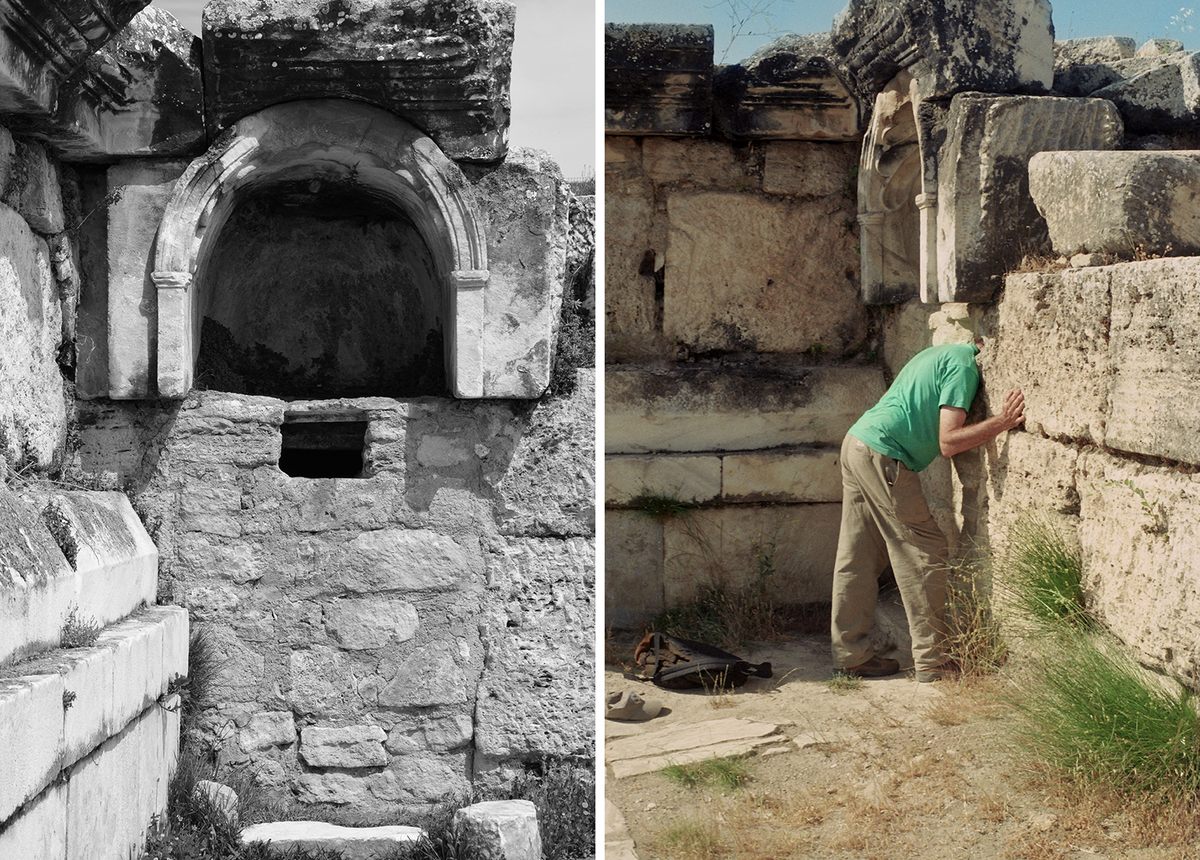
In poking around before the trip, I had come across a vaguely sourced article in Omni magazine that asserted that two vacationing Australians had entered the Plutonium recently and disappeared. An equally vague website claimed, “Many people throughout history who went past the mouth of the cave never returned.” We were undeterred as we eyed that head-sized gap.
I volunteered. “Promise you’ll wave or something, if you’re passing out,” said Hale, as I prepared to look in. “Oh, sure. If I look like I’m slumping, just grab my legs and pull,” I said.
My head just fit through. A hot, humid billow burned my eyes. I held my breath and blinked as my vision adjusted to the darkness. In a cell-like room, a square shaft descended about six feet down, where a narrow black cleft curved to the right and out of sight. A dark shape lay on the floor, unidentifiable. Gasping for air, I pulled my head out.
Later, Fettah Anli, the friendly owner of the nearby Hal-Tur Hotel, told us he had grown up playing among the ruins. He was quite sure no one had ever disappeared in the Plutonium, but he did say that locals had once hung a sign over the door saying “Devil’s Hole,” and lowered small dogs and other unfortunate animals to their deaths for the entertainment of paying visitors.
Fifteen years ago, he went on, a tourist from New Zealand—he remembered the man’s name was Thomas—went swimming in a mineral-water pool nearby, and decided to explore a narrow underground feeder channel. “After he swam in, his wife kept waiting for him,” said Anli. “But he did not come out. Then she started screaming.”
It took three days for a backhoe to reach Thomas’s body. He had become wedged in a tight spot 40 feet into the cave, and apparently drowned. It seemed that repeated retellings of the story had morphed his journey to the underworld into yet another myth.
* This, sadly, would not happen. Jelle Zeilinga de Boer passed away before he got a chance to go back.



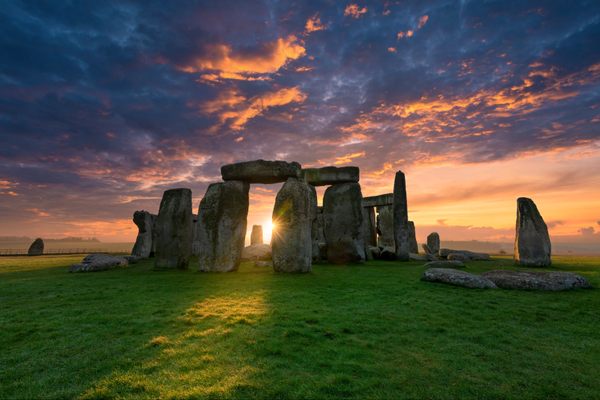
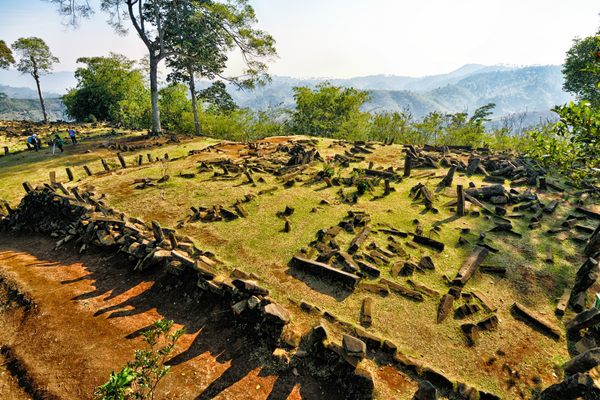



















Follow us on Twitter to get the latest on the world's hidden wonders.
Like us on Facebook to get the latest on the world's hidden wonders.
Follow us on Twitter Like us on Facebook